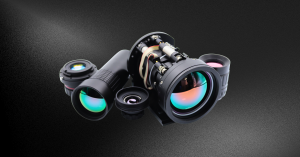Key Takeaways:
- SWIR hyperspectral camera lenses are crucial for capturing detailed spectral information.
- In this case study, the objective lens of SWIR cameras covers a broad band (1000-2500 nm) in a compact design.
- High transmittance glass suits short-wave infrared applications.
- Good color correction and close-to-diffraction-limit design improve image quality.
- Consideration of heat dissipation ensures performance in varied temperatures, making it adaptable for different environments.
SWIR Hyperspectral Camera Lenses
Short-Wave Infrared Explained
Applications of Short-Wave Infrared Hyperspectral Cameras
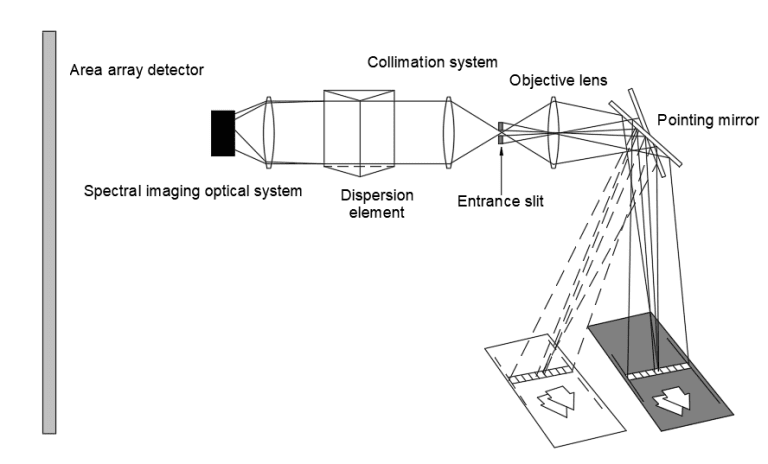
Hyperspectral Imaging Optical System
Specifications
Wavelength range | 1000-2500 nm |
F# | 2.8 |
EFFL | 30mm |
FOV | ±15° |
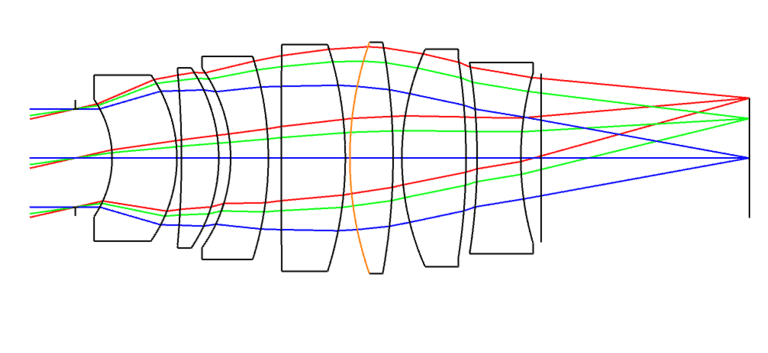
The imaging lens is an important part of a hyperspectral camera. In order to obtain more spectral information, the objective lens of the general hyperspectral camera covers a wide band, and the volume is small, which is easy to integrate. For instance, the following is a project of a short-wave infrared hyperspectral camera lens.
This objective lens covers the band of 1000-2500 nm, and the glass material has a high transmittance in this band, which is suitable for short-wave infrared applications. In addition, the design performance of the objective lens is close to the diffraction limit, and the color difference correction is good.
MTF Performance at Different Temperatures
The Modulation Transfer Function (MTF) graph is a critical measure of a lens’s ability to resolve fine details. Higher MTF values indicate better performance in terms of image sharpness and contrast.Lens Performance Evaluation at 20°C
The Modulation Transfer Function (MTF) graph below illustrates the performance of the lens at a temperature of 20°C. Specifically, the MTF is an important measure of the lens’s ability to resolve fine details. In general, a higher MTF value indicates better performance in terms of image sharpness and contrast.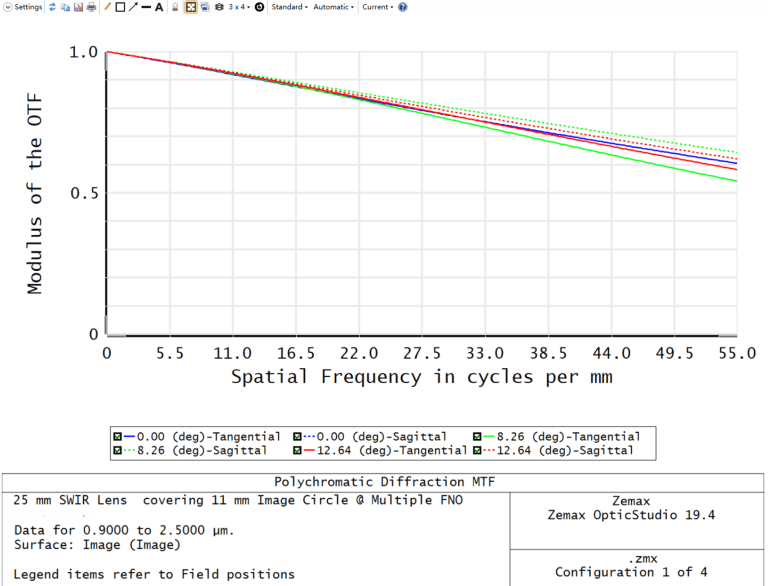
Performance Across Different Temperatures
Since hyperspectral cameras are often used in airborne environments and have a large operating temperature span, the design of the objective lens should consider the heat dissipation treatment. Moreover, the design performance at different temperatures is as follows.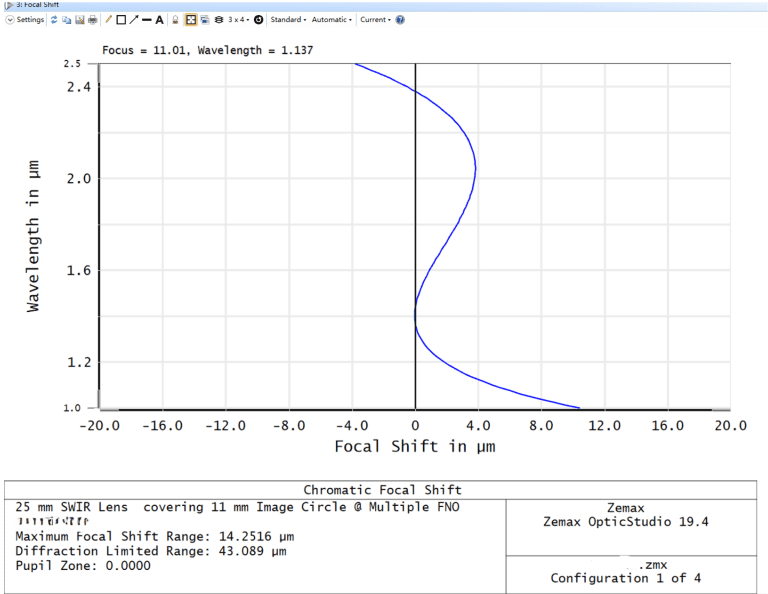
Lens Performance at Extreme Temperatures
The graphs below illustrate the lens performance at extreme temperatures of -20°C and 50°C. In particular, the MTF values indicate how well the lens maintains image quality across different spatial frequencies under varying temperature conditions.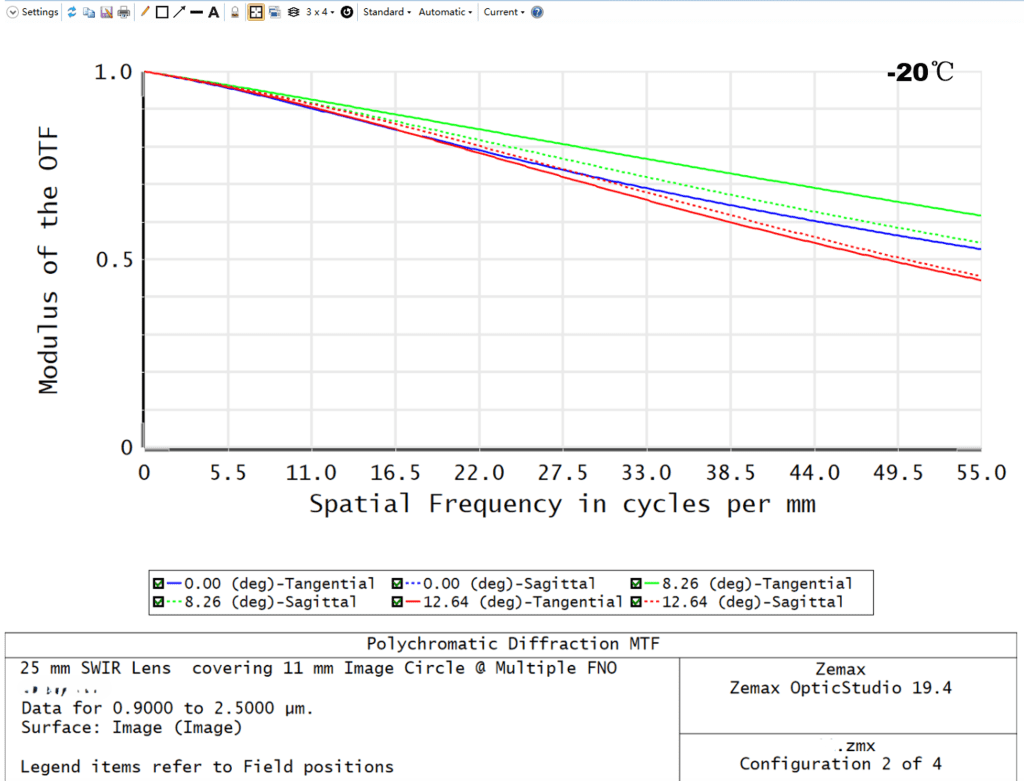
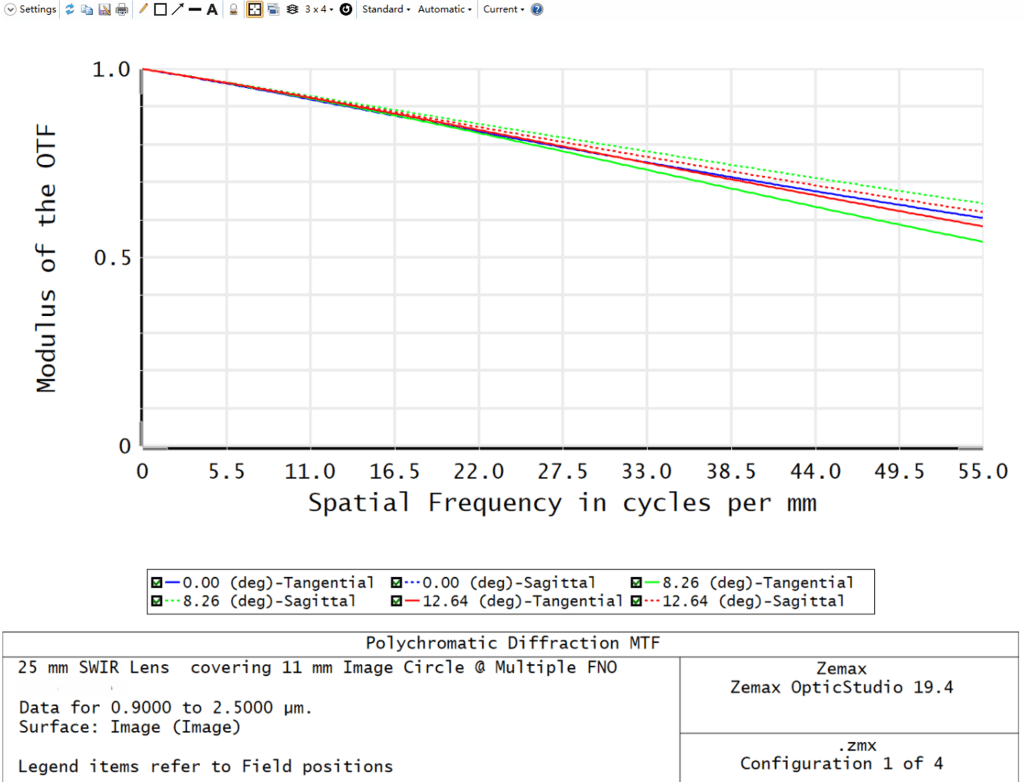
MTF@-20°C & 50°C
Versatility for SWIR Hyperspectral Camera Lenses
With a total length of less than 50mm, this SWIR Hyperspectral camera lens is compact and takes up little space. It has a field of view of ±15° and a large scanning area. Covering a wide band of 1000-2500 nm, it is suitable for shortwave infrared applications. Additionally, the thermal difference is corrected, allowing it to adapt to various temperature environments. This SWIR hyperspectral camera lens is versatile and high-performing, suitable for a wide array of applications including agricultural monitoring, geological exploration, art analysis, and more. Its ability to deliver sharp, high-contrast images under varying conditions underscores its value in detailed spectral analysis, reinforcing the critical role of hyperspectral imaging technology in modern scientific and industrial fields.
GREAT ARTICLE!
Share this article to gain insights from your connections!



